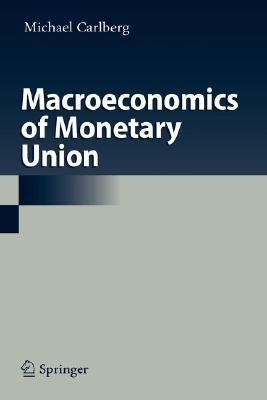This book, unlike other books, provides readers with a practical yet sophisticated grasp of the macroeconomic principles necessary to understand a monetary union. By definition, a monetary union is a group of countries that share a common currency. The most important case in point is the Euro area. Policy makers are the central bank, national governments, and national labour unions. Policy targets are price stability and full employment. Policy makers follow cold-turkey or gradualist strategies. Policy decisions are taken sequentially or simultaneously. The countries can differ in size or behaviour. Policy expectations are adaptive or rational. To illustrate all of this there are numerical simulations of monetary policy, fiscal policy, and wage policy.
Pt. 1 Monetary and Fiscal Policies: Basic Models 9
Ch. 1 Monetary Policy in Europe 11
Ch. 2 Fiscal Policies in Germany and France 23
Ch. 3 Competition between European Central Bank, German Government, and French Government 29
Ch. 4 Cooperation between European Central Bank, German Government, and French Government 42
Pt. 2 Monetary and Fiscal Policies: Intermediate Models 53
Ch. 1 Simultaneous Decisions: Cold-Turkey Policies 55
Ch. 2 Simultaneous Decisions: Gradualist Policies 60
Ch. 3 Fiscal Shocks in Germany 65
Ch. 4 The Countries Differ in Size 69
Ch. 5 The Countries Differ in Behaviour 78
Ch. 6 Rational Policy Expectations 87
Pt. 3 Monetary and Fiscal Policies: The Case of Three Countries 89
Ch. 1 Monetary Policy in Europe 91
Ch. 2 Fiscal Policies in Germany, France and Italy 98
Ch. 3 Monetary and Fiscal Competition 103
Ch. 4 Monetary and Fiscal Cooperation 110
Pt. 4 Monetary and Wage Policies: Basic Models 117
Ch. 1 Wage Policies in Germany and France 119
Ch. 2 Competition between European Central Bank, German Labour Union, and French Labour Union 125
Ch. 3 Cooperation between European Central Bank, German Labour Union, and French Labour Union 138
Pt. 5 Monetary and Wage Policies: Intermediate Models 149
Ch. 1 Simultaneous Decisions: Cold-Turkey Policies 151

 (0 Comentarios)
(0 Comentarios)






